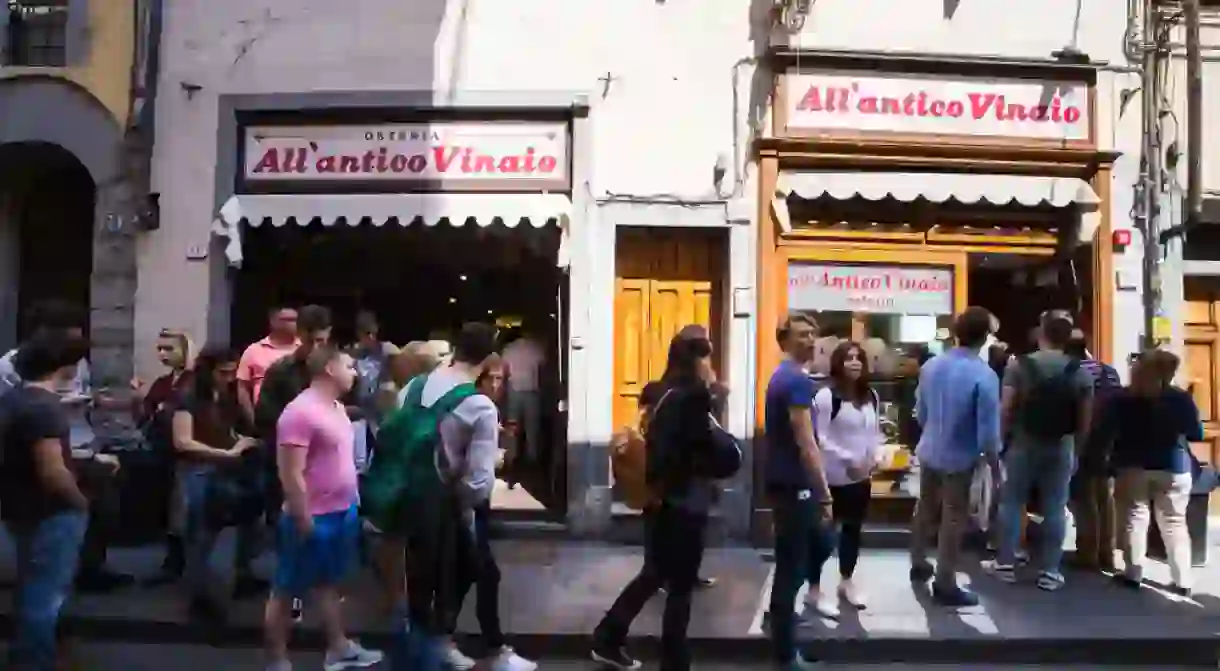Is Florence Right to Ban Public Street Food?

The city of Florence has recently established a new no-eating zone in the historic centre, following complaints about congestion and litter created by tourists eating takeaway paninis in the street. Visitors found dining on the pavement could now faces fines of €150 to €500. Is this a smart way of preserving one of Italy’s finest cities? Or is it just the result of traditionalist pressure? Here’s everything you need to know.
Background
Near the Uffizi Museum, in the street that connects Piazza della Signoria to Santa Croce, All’Antico Vinaio has the reputation of one the best places to get a panino in all of Florence. Its popularity means that gaggles of tourists continually occupy the pavement, surrounding doorways and stairwells whilst they pause to eat their delicious finocchiona salami sandwiches. Apparently this has been testing the patience of local businesses and residents, culminating in a fracas between a local shop owner and a family dining on his doorstep.
The new rule
The Mayor of Florence, Dario Nardell, has responded with a bylaw, which will be in place until at least January 6, 2019, that designates a new ‘restricted eating zone’. Visitors caught eating on the pavement in this area will be fined up to €500, reports The Guardian. The zone comprises a network of streets and piazzas close to All’Antico Vinaio and only applies during specific meal times.
Tourism in Florence
Interestingly, this follows a 2017 mayoral initiative to dissuade tourists from snacking on the steps of the city’s prized cathedrals and monuments: council workers are deployed daily to hose down the steps of basilicas to deter visitors from sitting down entirely. With Europe’s small cities under increasing pressure from visitor numbers, even leading to local protest in places like San Sebastian and Venice, perhaps such methods are an important part of relieving the negative impacts of tourism for local residents. However, Florence shares a problem of many other cities that is the making of its town planners – there is a noticeable lack of public benches (urban design deliberately exclude benches to prevent ‘loitering’), which suggests that the people sitting on someone’s stoop to eat do it more out of necessity than lack of courtesy for the shop owners.

Street food culture: the debate
But then should we be eating on the street at all? Has the trend for street food turned us into greasy-fingered, uncivilised litterers? For older generations who managed to exist without takeaways and coffees to-go, eating ‘al sidewalk’ must seem a bit unnecessary. Particularly for Italians, with their rich culinary heritage, for whom a leisurely table lunch is a ritual to be respected. In addition, for those people of faith who visit cathedrals and temples in order to worship, it is understandable that they might find people snacking on a sacred monument a little disrespectful.
On the other hand, with restaurant prices seemingly always on the rise, can we really blame tourists for sampling local cuisine in a more economic way? ‘Best cheap eats in…’ is nearly everyone’s first Google when they arrive in new place. And whilst locals in Florence might know where to find a moderately-priced, authentic trattoria to have lunch in the vicinity of all of the main sights, that is unlikely to be the case for travellers.
So what’s the verdict? Eating on the street: democratic and delicious, or dirty and disrespectful?














